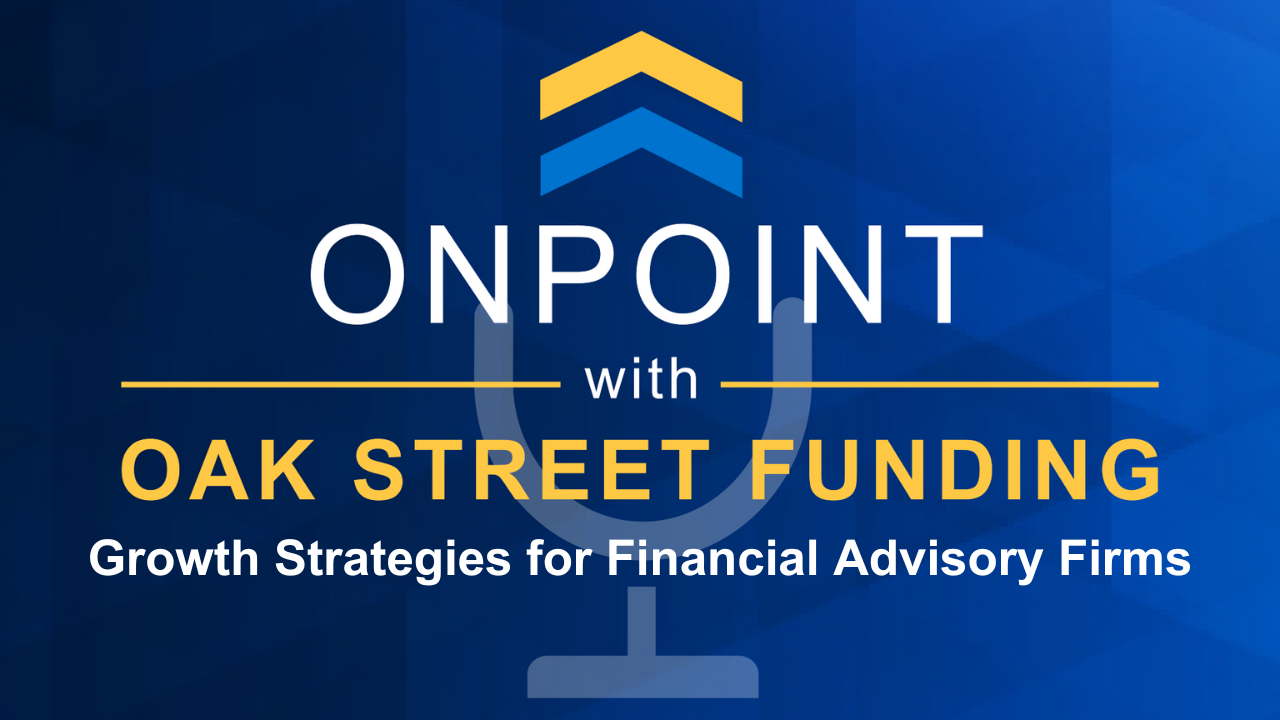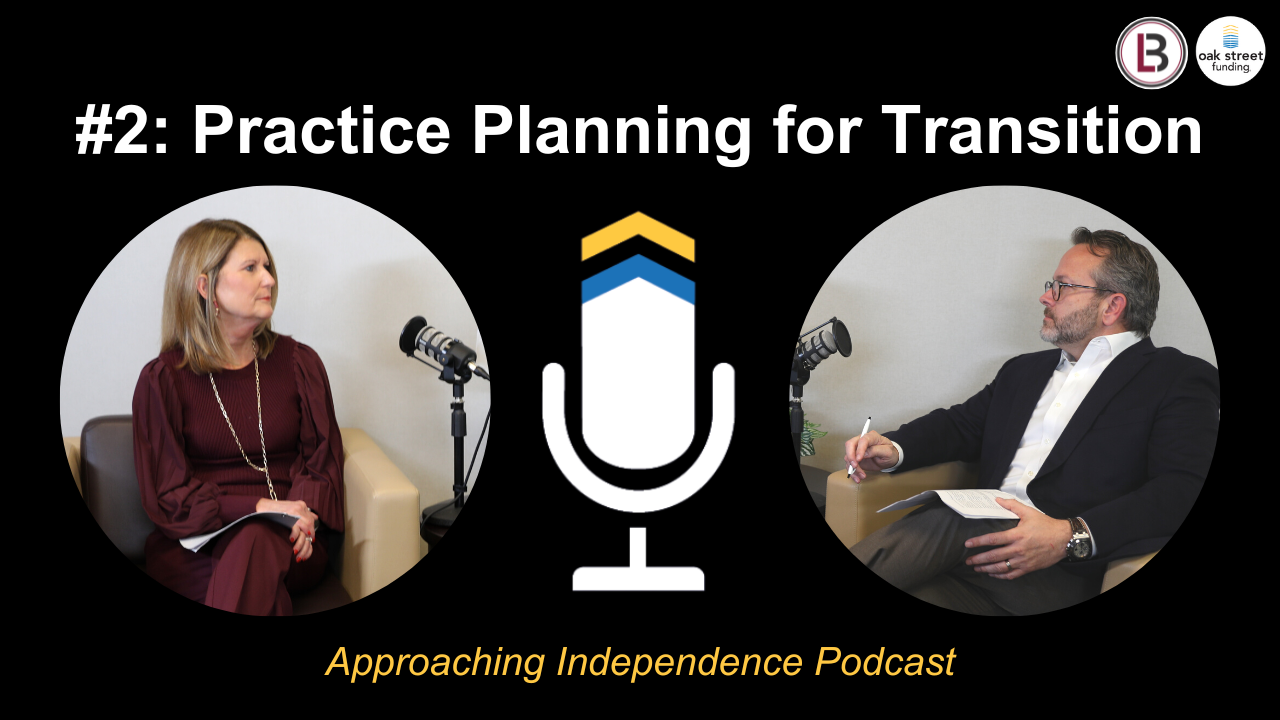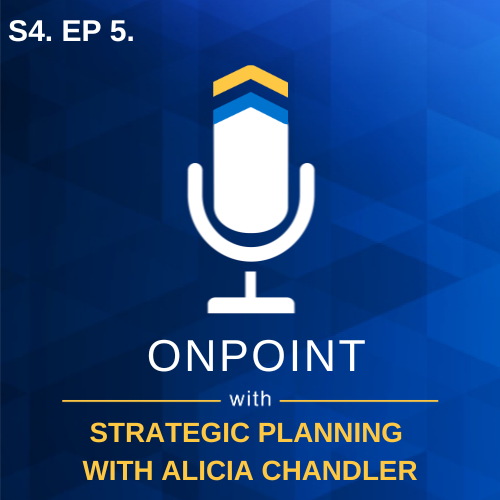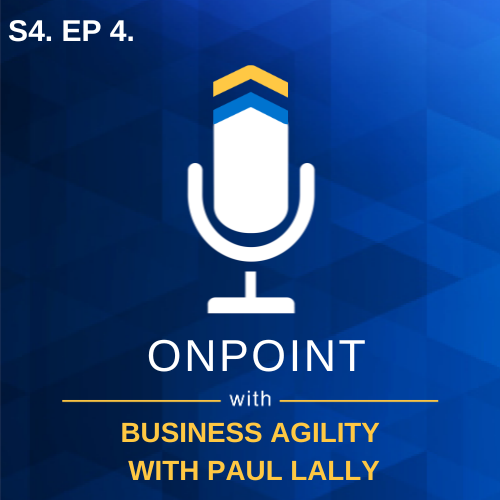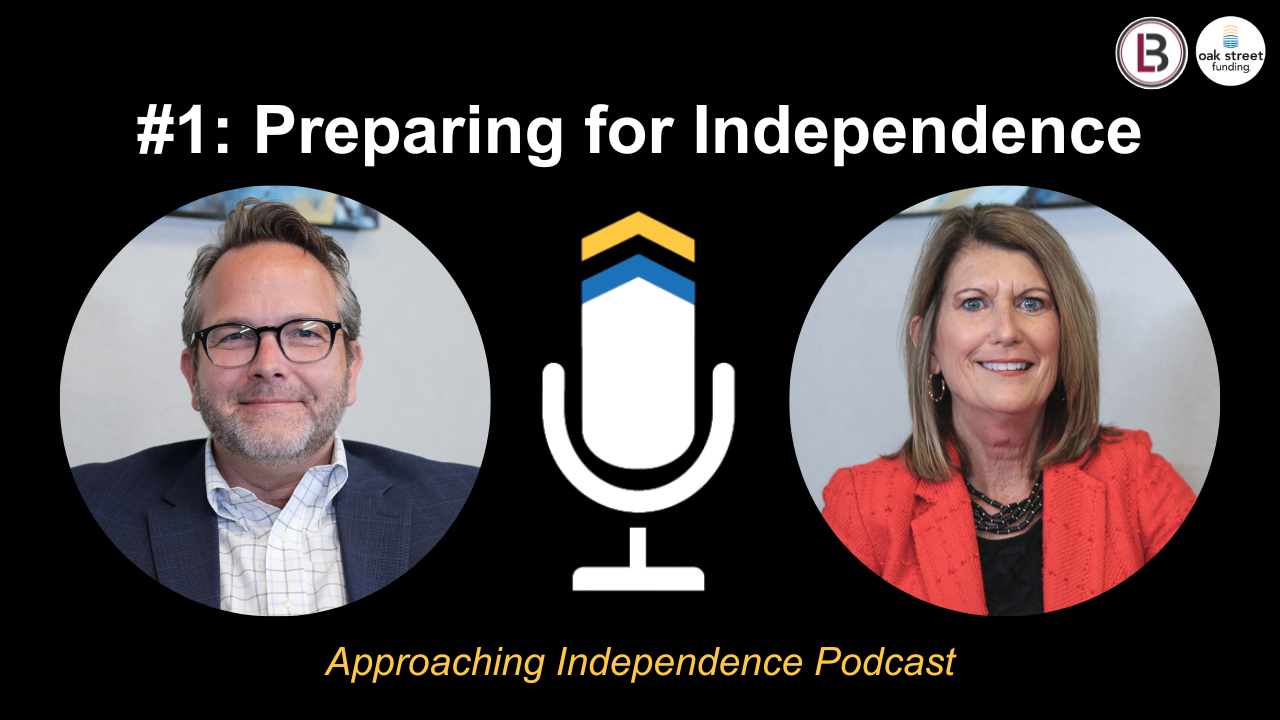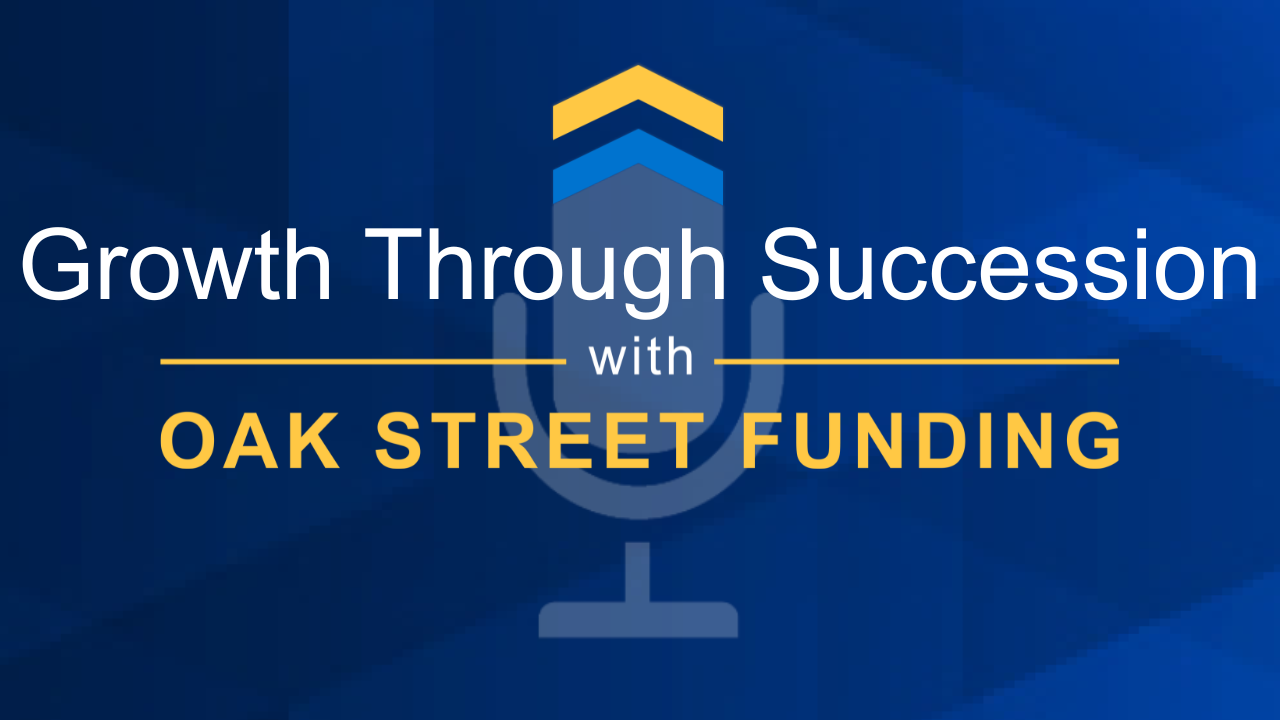S4. EP. 2 - Growth Strategies for Financial Advisory Firms with Diana Cabrices Consulting
- 0.5
- 1
- 1.25
- 1.5
- 1.75
- 2
Bridget Haight: Hi, and welcome to OnPoint, a podcast by Oak Street Funding, where we bring research and data backed insights to dig into the minds of industry leaders to learn how to stand out and navigate and break through this ever-changing industry. I'm your host, Bridget Haight, and you can support this podcast by following us on Spotify, Apple Podcast, on our website, or wherever you get your podcasts. We will be there hanging out and talking to industry leaders and ready to empower you to grow your business. Now let's get on point. Today I am delighted to welcome Diana Cabrices to the show. Diana is founder of Diana Cabrices Consulting and a fractional chief evangelist to B2B wealth tech companies, including Wealth, Fox, CRM and Wealthtender's certified financial advisor reviews platform and find an advisor website. Over the years, she has helped wealth tech companies grow by amplifying the problem they solve for advisors through energizing presentations and content that educates financial advisors. So thank you so much for joining us today, Diana. So we're just going to jump right in. To start by learning a little bit about you. You call yourself a fractional chief evangelist. Can you please tell me what that is?
Diana Cabrices: Yes, it is a loaded few words there. Most people are scratching their head when they hear the title, so we're going to break it down and we're actually going to start with the chief evangelist side. So the term chief evangelist has been around for a really long time, and most people quickly associate it with the religious world, and that is true, there's a lot of origins in religion. But back in the nineties we started to see technology companies bringing in the title for very similar reasons. An evangelist is your voice, it's your ambassador, it's someone who goes out in the market and really lights up the marketplace with your story and with your message. And so we saw companies like Apple, Canva, all start to adopt the title more formally, and now that is spread into financial services. The fractional piece though is, Bridget, very much... I am an outsourced sort of part- time chief evangelist for inaudible company.
Bridget Haight: Okay. Okay.
Diana Cabrices: And most people ask, "Why would you want someone?" Well, a chief evangelist with the caliber that most tech companies in our industry need or want. It's a six figure role easily, but not every technology company can afford a six figure hire. Maybe the board doesn't approve or there's other priorities. So you're still having the benefits and the big impact of a chief evangelist with the caliber, but at a fraction of the cost and a fraction of the time.
Bridget Haight: Thank you. That was very clear and concise. I appreciate that. What gaps did you see in the industry that led you to start?
Diana Cabrices: No, I really experienced the gaps myself and I also had other people bring attention to me. For example, I would go out and travel to conferences and I would speak on stage or I'd host some sort of event, maybe MC a session or be a moderator on a panel. And after the fact, I would have tech CEOs come up to me and say, "Holy crap, how much do I need to pay to do that for my company? That was really good." And that right there was sort of just the start for me of those aha moments that-
Bridget Haight: Sure.
Diana Cabrices: This is needed. I think on the flip side of being part of technology companies, I've also seen when you've got a CMO, when you've got a head of enterprise or a VP of partnerships, they're very close to the customer or to the prospect, but they're also wearing the operational hat where they have to do their job, they have to run teams, they have to meet quota, OKRs, KPIs, and doing that while also trying to be a full- time evangelist for the company, it's really hard. So I knew that there was a gap in a sense of capacity, demand and people, but also from the offer itself, tech companies needed my help.
Bridget Haight: I see. You saw the call. Okay. So what are some of the common marketing or growth strategies that RIAs can use to drive business growth and how do you determine which strategy is the best fit for a particular practice?
Diana Cabrices: So I want to give you an uncommon growth strategy because it's up and coming and it should be for very good reason. Then I want to talk about one common one.
Bridget Haight: Okay.
Diana Cabrices: So starting with the uncommon marketing play or strategy, there are a lot of advisors who are tiptoeing around the idea of testimonial marketing. So using online reviews in their inaudible. And they know based on data, 50 to 75, maybe even 80% of a buyer's journey, so someone like you or I who are looking for an advisor, they're going to do on their own terms. They're going to look at your website, they're going to look at Google, what kind of reviews do you have. The reality in this industry is that it was only two years ago that the SEC said, "Okay, you can start using testimonials in your marketing." The problem since then is I think there's a lot of, again, tiptoeing around compliance, "Should I do this? How can I do it compliantly?" But there are ways to do it compliantly. This is something I often speak about and educate advisors on now as chief evangelists for Wealthtender, which was the first SEC compliant testimonial platform for advisors. But what you're doing when you allow your clients to leave your reviews and you take those reviews and you put them on your website or you put them in a visible place like a profile or a landing page for people to see is again, you're meeting them where they are, you're meeting those needs, you're satisfying the emotional side of the buying journey, and essentially, you're letting your clients tell your story for you. So that's one very powerful way to move people along their journey, get them further down the funnel. And then I'll just share, the second common way that advisors are growing that we're seeing is referrals.
Bridget Haight: Oh, okay.
Diana Cabrices: So it's no secret, right? Most advisors will tell you their number one source of business growth is a referral.
Bridget Haight: Sure.
Diana Cabrices: And that's great. We want our clients to love our service so much they're telling their friends and they're telling their family, and that really just starts with good old like client service, right? You can have all the tactics and strategies in the world, but as long as you're centered with your clients, you're storing their information as far as what makes them different, what are their needs, what are their pain points, what's going on this year for my clients, who's graduating? Maybe there's someone in the house graduating. All of that should be documented somewhere so that you can later have those more personal conversations, send more personal gifts or communications, host more personal events. And I think the advisors that are doing this the best, they use their CRM the way it should be, not just a glorified Rolodex, but a true central hub of information. Shout out to Wealthbox. I'm obviously on Team Wealthbox, and there's a lot of great features and just capabilities that the tool makes this so easy for advisors. And on that note of referrals, client events are such a great way to drive those. So for example, if you know your clients, they love golf, right? You're hosting a golf event and you're telling them, " Bring a friend with you." So now it's not just my clients are there, but they're bringing someone, there's an educational topic we're going to cover, we're going to have some fun, we're going to network and get to know each other. Now you give that friend way more reason to want to continue exploring the potential of doing business with you.
Bridget Haight: So what technologies or services exist to help RIAs implement these growth strategies?
Diana Cabrices: So there's a few really what I would think to be innovative technology in the space that help advisors grow their business, whether it's through testimonials, whether it's through referrals. Since I've talked about those two specifically, I'll go back and repeat. For testimonial marketing, I don't think there's a better platform out there than Wealthtender.
Bridget Haight: Right. Okay.
Diana Cabrices: Most advisors would say, "Well, what about Google? What about Yelp?" The problem with Google and Yelp is you can't actually solicit reviews from clients, like their platform doesn't actually allow for it. They have very strict rules and regulations. So I'm not saying nix those platforms, but if you want to actually do it compliantly, Wealthtender is a great tool. When it comes to referrals and event marketing, I think White Glove does an amazing job with seminars and webinars for advisors. And then you have to think about what happens after the seminar. How am I nurturing these people and making sure I'm still sending them personalized content. Like they came to a tax webinar, I want to keep sending them tax content. I would say Snappy Kraken is one of the best email marketing tools out there for advisors. I obviously... Or I shouldn't say obviously, but I used to work at Snappy Kraken and I'm super passionate about what they do. I think the content is second to none in the space. So I'd say Wealthtender, White Glove, Snappy Kraken. And then if you're looking to really have a super easy CRM where you can store this client data, coordinate these events, everything seamlessly with a team, then Wealthbox is the way to go for your CRM.
Bridget Haight: Great. Thanks for that. So how do you identify and target potential new clients for an RIA practice, and what are some effective marketing techniques for reaching them that you've found?
Diana Cabrices: There's, again, so many different answers to this question, but once you've established those unique selling points, once really deeply what they need, start to build on that. So your website's obviously your foundation, and that's where, again, you want to have, " Who are you? What are you out to do? How are you different? In what way are you going to solve their problem?" So always taking it back to them, not just you. And then from there, give them a pathway. So think about top of funnel marketing, middle of funnel marketing, and bottom of funnel marketing. Well, top of funnel is going to be those SEO, those ads, we're reaching out to people, we're targeting them where they are, we're hitting them on the platforms that they're playing on. But once they go to your website, what's that middle of funnel experience? Can they opt in for a newsletter, for example? Is there some sort of helpful guide that's going to answer the three top questions they have around their finances as a business owner? And then from there, you continue to send quality content. So now we're sort of getting in from website to now middle of funnel content marketing. Where can they get on your blogs, on your articles? Do you have videos that you host on your website? Which obviously, videos are a really great way to connect with people digitally, but even further, once they're opted in, let's say you have a newsletter, you're some sort of special offer. What's that experience for them then, and how do you take them from, "I'm a subscriber on your email list," to now, "I'm actually having a meeting with you because I want to meet." So from middle of funnel to bottom of funnel. Again, email marketing is powerful, having a great website, focusing on them, getting crystal clear and having that journey built in so they have the information they need to make a decision even before they talk to you, which is just the reality of the way we buy today.
Bridget Haight: So people have identified targets and have started marketing to them. So how do you assess and manage risk when pursuing business growth opportunities as an RIA, and what are some of the common risks associated with the growth?
Diana Cabrices: I think the number one question that you need to ask yourself is, " Can you handle the growth?" So there are a lot of shiny opportunities out there, and when you come close to one, it becomes all the more exciting. This is it, this is the deal. This is going to move us from here to here. From a revenue standpoint, this is going to fulfill some of our goals that we've had on acquisition or whatever the opportunity might be. But I think you really need to get real with yourself and ask yourself, " Can you handle the growth?" The risks that you might see if you're not properly doing your diligence, I think a lot of it comes back to due diligence is, for example, your technology, your people, right? So from a technology standpoint, how is taking on this opportunity going to change the infrastructure of our technology or will it make it more difficult or will it ease our lives? I think those are questions you need to ask. And then from a people standpoint, do we have the right people in place to support this growth? If we don't today, what steps do we need to take to put the right people in place or hire or train? And even then, how long is that going to take? And timing that with the opportunity itself. So there's a lot of different ways you could go about it. And I think, again, starting with the due diligence, making sure everything is aligned, that you've got the technology to support the growth, you've also got the people to support the growth, I think these are two elements that should absolutely be considered when thinking about risks associated with taking on new growth opportunities.
Bridget Haight: Okay, great. So how do you determine whether an M&A deal is the right strategic move for a financial advisory practice, and what factors should be considered?
Diana Cabrices: Strategic alignment. Going back to that first and foremost. Is this going to move the needle for our business? Does this align with our goals, both short term and long term, our vision, our growth strategy overall? But thinking about synergy, people, culture, I think when you have such a great opportunity on the line, a lot of advisors and the people that are supporting them with these opportunities, M&A consultants for example, they're going to first and foremost focus on the financials. As you should. Let's do our diligence. Let's make sure the valuation is... It's standing strong, it's supported, there's documents to support their claims. That's really important. But an M&A has such a bigger impact on a business than just financials. There's a huge impact on culture. So if you aren't sure it's the right culture fit, or maybe there could be conflicts. You need to really think these through thoroughly. It's not just financial, it's also cultural. And then I'll go back to what I was saying a moment ago about technology. So when you're combining two firms, you're essentially combining your two tech stacks. And so how easy will that be? How difficult will that be? Do our technologies even align? And then thinking about the people involved, not just the human capital in the business, but also our clients. Do we have any client overlap? How is this deal going to impact existing client relationships? Will it be positive, can it be negative? Will it give us new access to client segments or markets? Again, this could be really positive for the firms or it could trend negatively. So I think just doing that research is really important. The last thing I'll say, Bridget, is the operational challenges. So I've gone through a fair share of M&As in my career with the technology companies that I have been a part of, and I can tell you that the hardest part is always getting what we like to say like the two trains on one track operationally, and sometimes they crash.
Bridget Haight: Yeah, I can imagine.
Diana Cabrices: And sometimes it's really seamless, but it takes work. It takes putting the right people in place, having the right processes in place, doing the due diligence, and then getting you on an operational plan where one client can go through the entire experience and benefit from combined companies, but in a smooth way.
Bridget Haight: So besides M&A, a lot of advisors are starting to discuss succession options, either internal or external. What are some common challenges that arise when implementing a succession plan and how do you address them?
Diana Cabrices: So anecdotally, from the time that I spent at a company called Succession Link, where I talked to advisors all day long about their succession plan, about finding the right match, connecting with the right people, and having that plan in place, that is really important. I learned that it's a very personal subject.
Bridget Haight: Yeah.
Diana Cabrices: So what I mean by that is I'm an advisor, I've spent my entire career building a practice. This is my pride and joy. This is my baby. And I have another advisor who is talking to me about succession planning. Almost always, these advisors are going to overinflate the value of their business because it is such an emotional bond that they have with their businesses. So I think out the gate, that's something that everyone needs to keep in mind. This is a very personal conversation. Some of the challenges you might deal with right away is that emotional bond that you're essentially breaking in a bit of a way if you were to step in as a successor for a business. And so just understanding that it becomes personal and you're going to have to work around that. Of course, as you work around that, that's where you come in and you do the financial due diligence. You take into account the financial considerations, the valuation of the business. Again, do the documents line up with that? And does this plan align with his plan or her plan? So I've seen plenty of deals fall through of succession plans because from the onset of conversations, there were not clear goals. For example, I run a practice in California, you run a practice in New York. Well, if you're going to take over my firm, you're going to have to come over to California. Well, that wasn't something we talked about two years ago when we started these conversations. Now everyone is... Everything's falling apart, no one's happy. So again, just clear goals from the onset. Very important.
Bridget Haight: That makes total sense. This has all been such great advice. Thank you so much, Diana. So overall transition can be hard. So how do you ensure that clients remain loyal to the practice after a transition of ownership?
Diana Cabrices: There's two things here I would share. Number one, proactive communication. Number two, relationship continuity. So I think there is never such thing as over- communicating when it comes to situations like these, right? When there's a transition happening or somebody's stepping away or there's somebody new being added in, you can never over communicate. Let's talk about the upcoming transition with our clients. Let's talk about the reasons why this is important to us, and not just a broadcast email or video of some sort, but also one- on- one personalized communication with clients, whether it's happening during your meetings, you're picking up the phone, you're calling your client, and you're telling them, "This is what is happening." I think that is super important.
Bridget Haight: Yeah.
Diana Cabrices: Now, on the flip side of the communication, actually, it all ties in together, is the relationship continuity. So for example, if Joe meets with Sally and Sally heads up our client services team, and Joe was used to meeting with Sally, I would do everything in my power to keep that setup, right? If I am giving my firm away, part of the negotiations are going to be, " I need my key players to maintain their positions, and I need them to continue on managing and nurturing the relationships they do." So I think you can't underestimate the power of the relationship your clients have already built with members of your team. And so keeping them in place as much as you can, I think will go a long, long way. So again, proactive communication. Let them know why you're doing this, how it's going to continue to benefit them, why it might even be better for them in the long term. And then with your people, making sure you don't change too much too soon. Let these bonds maintain themselves. Let your clients still get the same awesome experience with the same people.
Bridget Haight: Love it. That all makes total sense. Thanks Diana. Hey, before we end the show, we like to ask a more personal question. So sort of a fun question. Besides your job, what are you passionate about?
Diana Cabrices: Yeah, I like that you asked this question. I love that we're ending on a personal note. I love to travel and-
Bridget Haight: Yeah.
Diana Cabrices: Traveling to me is just... It's such an important part... It's a need that I have to maintain my sanity. I need to be able to just spread my wings and fly whenever I want. This is partly why I am so passionate about remote work. If I want to go work from another state or city or country, I can do that. But yeah, I think with travel, I started back in 2015. I took off. I sold all my stuff. I went and traveled. I was supposed to go to Europe for three months, I ended up staying for two years, and that was the start of, I think, the travel bag. There's been 18 countries I've visited since then, and I'm not done. So-
Bridget Haight: That's fantastic. So are you more of a go and relax and chill kind of traveler or a you a, " I want to go see everything and live like a local," kind of traveler?
Diana Cabrices: I think when I started out, I was the latter. I wanted to go see everything. I would go all day long with my backpack, some water, some snacks, and you wouldn't see me until the nighttime. As I've gotten older and there's more responsibilities on my plate, just from my career, I've gotten a little more tired, and I'm now in the place where I'm like, " Yes, I want to do those things, but if it's a three- day trip, I'm going to spend two of those days relaxing."
Bridget Haight: Relax. Just relax. You're a busy lady. You need to relax.
Diana Cabrices: Exactly. Yep.
Bridget Haight: This has been so nice. Thank you, Diana. It's been lovely talking to you.
Diana Cabrices: Thanks, Bridget. Thanks for having me. This has been wonderful. I hope it's been helpful for the advisors that have tuned in on the show and that we get to do this again sometime.
Bridget Haight: I'd love that. Thanks again. Thank you all for listening to OnPoint, a podcast by Oak Street Funding, where we bring research and data backed insights to dig into the minds of industry leaders and to learn how to stand out and navigate and break through this ever- changing industry. I am Bridget Haight. Tune in next time wherever you listen to podcast as we get on point. Don't forget to subscribe and leave this review.
DESCRIPTION
Today I am delighted to welcome Diana Cabrices to the show! Diana is founder of Diana Cabrices Consulting and a fractional Chief Evangelist to B2B wealthtech companies, including Wealthbox CRM and Wealthtender's certified financial advisor reviews platform and find-an-advisor website. Over the years, she has helped wealthtech companies grow by amplifying the problem they solve for advisors through energizing presentations and content that educates financial advisors.
Today's Host
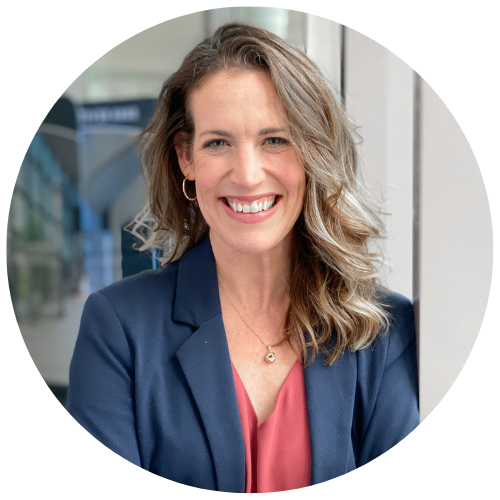
Bridget Haight
Today's Guests


